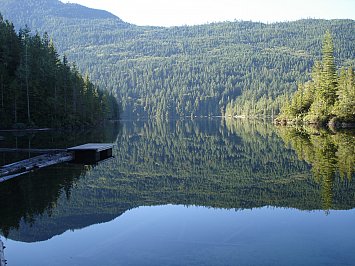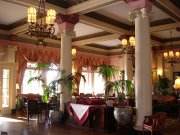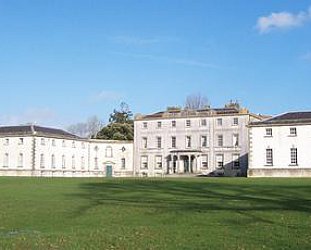Graham Reid | | 4 min read

My Canadian friend Bob would often tell me that there was a highway right outside his house, and then he’d laugh loudly. I didn’t think that was a laughing matter -- until I went to his beautiful ocean-side apartment in Victoria on Vancouver Island.
As we sat on his patio sipping cocktails in the late afternoon he swept his hand towards the blue harbour in front of him and said, “Here’s the highway I’ve been telling you about. Just watch.”
And so for the next hour we did, as float planes would glide across the blue water and come to gentle landing. It seemed impossibly romantic.
Further around was what he called “my taxi rank”: it was a jetty from which small boats would putter their way around the harbour taking tourists and locals from one picturesque point to another.
If you had to have a highway at your doorstep this would be the most attractive you could imagine.
Canada is different like that: in many places a seaplane is your standard mode of transport, in others you rely on the large and comfortable ferries which take passengers and vehicles from one island to the next, or -- in the case of my visit to Bob and his charming wife Mary in Victoria -- from Vancouver to Vancouver Island.
Despite the confusing similarity of names, the two places could hardly be more different.
Vancouver, the capital of British Columbia, is a busy cosmopolitan city of some 150,000 residents with a median age of 33, is nestled into a remarkably small area which makes it easy for visitors to walk around easily. Here are important museums and art galleries, smart restaurants and hip pubs, and sky-piercing towers.
Vancouver Island on the other hand -- with the exception of Victoria which boasts excellent cafes and bars, a thriving city centre and numerous art and craft shops -- is a long island and the further you travel north the more likely it is you may find yourself one of the few cars on the road.
Vancouver Island can be astonishingly beautiful: up the coasts are small harbours, quaint townships and quiet bays; and in the centre are towering mountains ranges which are often provincial parks and offer hiking trails and ski slopes.
There are surf beaches and fishing villages; and you can make your way around without any difficulty.
But don’t be too fooled by the gorgeous lakes and sweeping rocky beaches, Vancouver Island is also unattractive in small pockets, like the town of Nanaimo 120 kilometres north of Victoria.
The centre of this coastal town retains its old character but it has been surrounded by urban sprawl and development, and most tourists only encounter it if they are taking a ferry from there to the mainland.
But it is the natural sights of Vancouver Island which act like a magnet: the beautiful Strathcona Provincial Park which is so high you imagine you can see half of mainland Canada; the easy drive on the old road Highway 19A between Parksville and Campbell River which skirts the Strait of Georgia and commands your camera repeatedly; the dawn coming up over Texada Island or the quaint (but moneyed) Gabriola Island where baby-boomers are buying up property and retiring . . .
What strikes you about this region of Canada is the diversity of life and life-styles -- from wealthy retirees to latter-day hippies and fishermen -- and the sheer beauty of the natural world which is but a few minutes drive off the road.
Within easy striking distance of Vancouver where most tourists arrive, Vancouver Island offers Canada -- in a compact edition.
Things to do on Vancouver Island
Have a cocktail at the Fairmont Empress Hotel, Victoria.

Get to the Grotto.
At the restful Tigh-Na-Mara, a 22 acre resort of cedars and seaside near the town of Parksville (described in one guide book like this, “as drab a town as you could hope to see”), you can take a comfortable log cabin with an open fire or stay in one of the chalet suites with a view over the Strait of Georgia, and enjoy fine dining. You may also want to go to their Grotto Spa for a soak in the soothing waters before or after your massage.
Hike, but stay in style.
Vancouver Island is not short of wilderness lodges, but one stands out for New Zealand travellers. Coastal Trek Lodge high up on Forbidden Plateau above the town of Courtenay is owned and operated by Whangarei’s Shayne Stuchbery with his Canadian wife and in-laws. The extended families and friends built the lodge two years ago and today it is a fitness centre-cum-spa lodge with Strathcona Provincial Park, the oldest such reserve in British Columbia, on its back doorstep. By day you tramp and get fit, by night you enjoy the pleasures of the lodge with its huge open fire, excellent chef and deep-cushion comfort.







post a comment